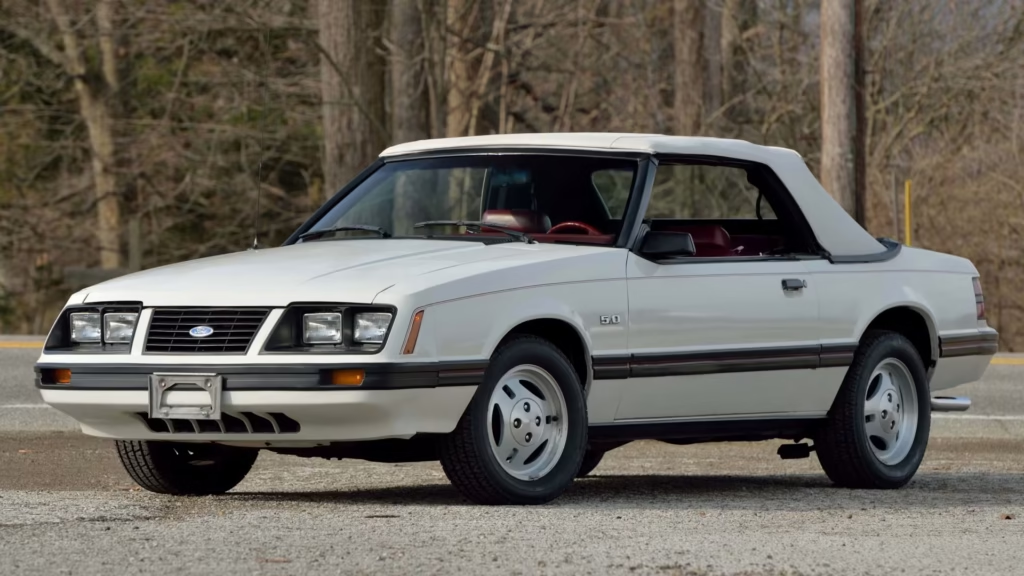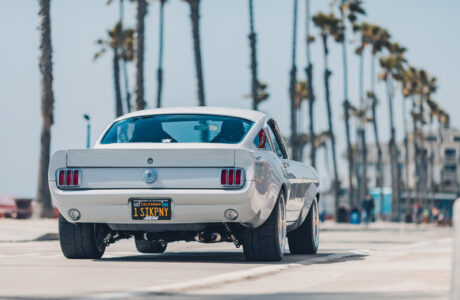The Evolution of the 1979-1993 Ford Fox-Body Mustang: From Compact Car Origins to Legendary Status
The 1979-1993 Fox-Body Ford Mustang is an icon within the Mustang lineup, a pivotal chapter that kept the legacy alive while adapting to a new era. From its beginnings on a platform initially designed for Ford and Mercury compact sedans to its steady evolution with upgrades in chassis, body design, suspension, and engine, the third-generation Mustang blended affordability and performance that continues to resonate deeply with enthusiasts.
Here, we’ll walk through the development of this Mustang generation, why we think it remains a top choice for enthusiasts, and what we recommend for those looking to take their Fox-Body Mustang to the next level.
The Fox-Body Foundation (1979)
As the 1970s drew to a close, Ford searched for a way to re-energize the Mustang in response to evolving market demands. Sales were declining for the smaller, Pinto-based Mustang II, a model enthusiasts never really accepted. Ford knew it had to return to the first Mustang’s original concept.

The Fox-Body platform gave Ford an ideal base for the rejuvenated third-gen Pony Car. It was lightweight and versatile, providing Ford with an adaptable foundation for the new Mustang.
The initial lineup offered several engine options, from the modest 2.3L Lima inline-four to the 2.8L V6 and a 4.2L V8. Although the early models were a bit light on power (put that down to emissions and fuel economy concerns), they were nimble and fun to drive. Ford had laid the groundwork for what would soon evolve into an enthusiast’s dream.
Chassis and Suspension Development Over the Years
One thing we love about the Fox-Body Mustang is its balanced driving experience. From the start, Ford engineered the chassis and suspension setup to cater to daily usability as well as performance, with a MacPherson strut front suspension and a four-link, coil spring rear suspension that delivered responsive handling without compromising ride comfort. Over time, Ford introduced refinements, stiffening the chassis and tuning the suspension to enhance responsiveness and cornering stability, even offering an independent rear suspension (IRS) for the 1999-2004 Cobra models.
For those looking to elevate their Fox-Body’s handling further, we at Aldan American recommend exploring our aftermarket suspension upgrades. With today’s more advanced suspension technology, you can transform your Fox-Body’s ride and handling. Front and rear bolt-on coilover kits, in particular, allow for adjustable ride height and refined handling dynamics, a must for anyone wanting to push their Fox-Body’s capabilities without sacrificing everyday drivability.
Body and Styling Evolution
Throughout its production run, the Fox-Body Mustang’s styling adapted to the trends of the times. Initially, the look matched the ’80s vibe. A notable refresh came in 1983, giving the Mustang a more streamlined front fascia, while the 1987 redesign introduced flush headlights and a smoother nose, which improved both appearance and aerodynamics.

What we like most about the third-generation’s body style is its versatility. Available in notchback, hatchback, and convertible configurations, it offered something for everyone, whether it was a practical daily driver, a weekend cruiser or a cone-slaying autocrosser. No matter the year, the Fox-Body Mustang’s styling has a timeless appeal, evident in its continued popularity today. Another reason it’s still such a hit among enthusiasts is its endless potential for upgrades and customization.
Engine Evolution and Performance Boosts
One of the exciting chapters of the Fox-Body’s story is its engine evolution. Emissions regulations and the somewhat constrained early models, but Ford steadily worked to get more power from the lineup, improving efficiency. This culminated in some iconic powertrains that are still revered today. Notable developments included the 2.3L turbocharged and intercooled four-cylinder in the 1984 Mustang SVO model and the legendary Windsor 5.0L V8, which became a staple of the Mustang lineup.
In 1986, 5.0 V8 engines adopted sequential fuel injection, significantly boosting the 5.0L’s torque output, a fitting conclusion to the initial Fox-Body era. The 1993 Ford Mustang Cobra and SVT models closed out the Fox era with their 5.0L V8s, which developed 235 HP and 285 lb-ft of torque with GT40 modifications. In comparison, it may not seem that much power by today’s standards, but it was enough to propel these models to a 5.5 second 0-60 time in Car and Driver tests.

Unique Models and Limited Editions
Throughout the Fox-Body era, Ford rolled out a series of special editions, including the 1979 Indy 500 pace car, which has become a collector’s item. From the GT to the Cobra and the SVO, these models gave enthusiasts performance upgrades and styling cues that set them apart from the standard Mustangs. The SVO and SVT models showcased Ford’s engineering prowess. The final 1993 Cobra and Cobra R models represented the ultimate Fox-Body performance, with upgraded engines and rear suspensions that made them legends in the Mustang community.
The Ford Probe: The Mustang That Almost Was
The Ford Probe almost changed the Mustang’s history. In the mid-1980s, Ford considered replacing the Mustang with a front-wheel-drive model developed in partnership with Mazda. This new car, later released as the Ford Probe, was initially intended to carry on the Mustang’s name against a growing number of front-wheel drive coupes. However, the proposal was met with substantial resistance from loyal Mustang enthusiasts who didn’t want to see the iconic car lose its rear-wheel-drive setup.
Thankfully, Ford listened to its fans, and the Mustang kept its rear-wheel drive intact. Ford launched the Probe as a separate model, and the Mustang’s legacy remained unblemished. We think it’s a great story about how fan loyalty and Ford’s respect for Mustang heritage preserved one of America’s most beloved performance cars.
Aldan American’s Suspension Solutions for the Fox-Body Mustang
One of the areas where the Fox-Body Mustang shines is its potential for customization, particularly in suspension upgrades. We at Aldan American believe in bringing out the best in every Mustang, so we offer a range of high-quality suspension solutions specifically for the 1979-1993 Mustangs. Our bolt-on coilover kits allow Fox-Body owners to fine-tune their ride height and suspension response without making permanent modifications.
These kits are ideal for anyone looking to improve handling while retaining the car’s versatility. And our kits don’t require cutting or welding, so installation is straightforward and reversible.
The Legacy and Lasting Appeal of the Fox-Body Mustang
The Fox-Body Mustang isn’t just a car—it’s a cultural icon. From its beginnings as an affordable performance car that adapted to a new era to its place as a modern classic with an enthusiastic fan base, the 1979-1993 Mustang remains one of the most beloved American cars ever made. The Fox-Body’s balance of affordability, tuneability, and raw performance potential is why it’s still so popular among old-school and new-generation enthusiasts.
If you’re one of the many enthusiasts looking to take your Fox-Body to the next level, we recommend starting with suspension upgrades. Aldan American’s products are designed with Mustang enthusiasts in mind, offering you the chance to improve handling, responsiveness, and overall driving pleasure. Whether for weekend cruises or spirited track days, enhancing your Fox-Body’s suspension is one of the best ways to appreciate what this legendary car offers fully.



